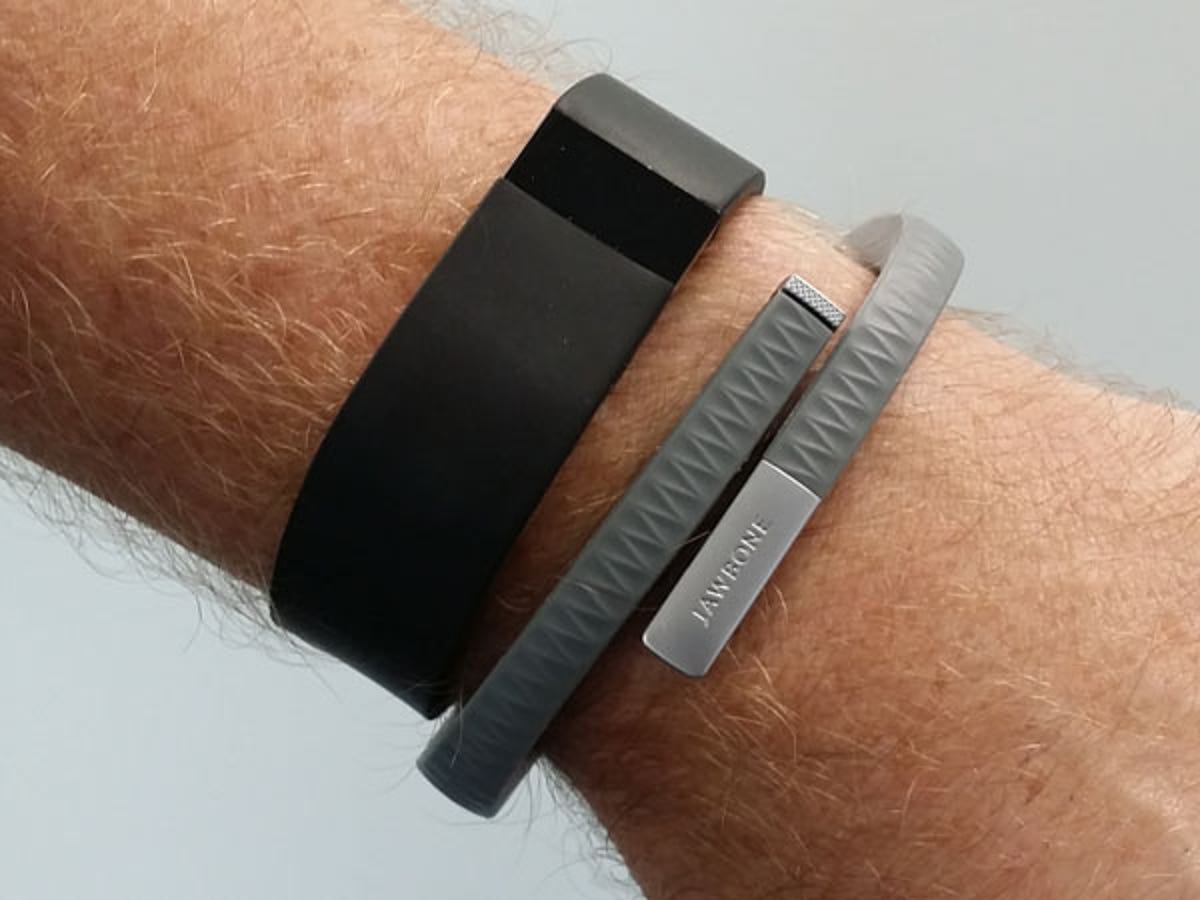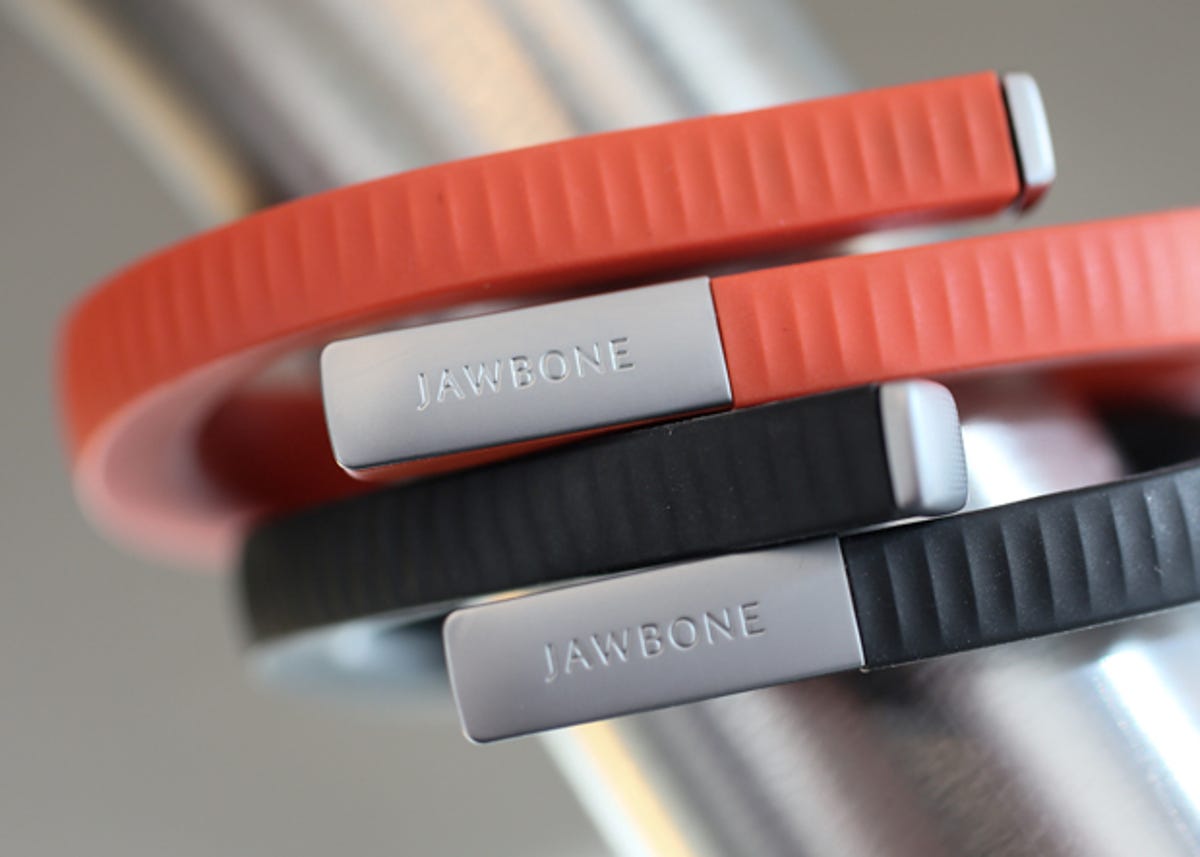
Sarah Tew/CNET
When the news hit this month that Nike is winding down its FuelBand efforts, there were bold claims that the nascent wearable tech market, it would seem, was suddenly in big trouble.
The more nuanced consensus is that current activity trackers are at worst a fad, turning glorified pedometers into flashy app platforms that don’t really change our behavior or make us slimmer. At best, they’re placeholder products before the proven device-makers like Apple and Samsung deliver a mainstream wearable device that consumers will deem a must-have.
Related Stories
- Exclusive: Nike fires majority of FuelBand team, will stop making wearable hardware
- The end of fitness bands? Wearable tech feels ready to move forward
- Nike FuelBand — out of gas already?
- With FuelBand exit, Nike signals the limits of tech’s appeal
That’s left current market leaders, Fitbit and Jawbone — both of which captured more of the tracker device market than Nike did in 2013 — in a peculiar position. One of their largest competitors has signaled that it plans on dropping out of the race, yet some reports suggested Fitbit and Jawbone’s primary business had died before it even caught on. Others spent time convincing us why wearables are still alive, if maybe on life support until the rumored Apple iWatch or fitness band jump-starts the market. Fitbit says they’re not worried about the health of wearable tech. Jawbone declined to comment for this story.
“Having been immersed in making the most advanced health and fitness trackers over the past 7 years, we remain confident about the future of this category,” Fitbit, founded in 2007, said in a statement. It declined to comment on Nike’s FuelBand plan. “These are exciting times despite some of the recent sensationalized headlines and our goal is to continue our mission of helping people live healthier, more active lives.”
There are fitness trackers for athletes; activity trackers for those interested in not only fitness but also the quantified self movement; and smartwatches for those who want some of the functionality of the former two, but a bit more smartphone fusion to go with it. There are even subsets of smartwatches: Pebble, for everyday use, and Garmin, for serious athletes.
This illustrates the problem with ringing the wearable death knell right now. No single device is truly designed or marketed to be the one to rule the wrist, and some will be able to coexist even as the wearable market crowds.
Fitibt, which led 2013 tracker sales by capturing 67 percent of the market, makes numerous products at multiple price points, including the $100 Flex wristband and $100 One clip-on tracker, as well as a $60 clip-on Zip. To say that the FuelBand’s exit is emblematic of something malignant in the entire wearable industry is oversimplifying the road ahead. But that doesn’t meet there aren’t challenges for the current wristband market.
Fitbit is grappling with a recall of, and a lawsuit over, its Force wristband due to skin irritation issues. That didn’t damage Fitbit sales. In fact, Fitbit captured more of the market in March, after the Force recall, than it did in October following the October 10 release of the Force — from 64 percent to 67 percent — according to The NPD Group in a retail report released this week.
But there is the bigger question: What happens to fitness bands when there are cheap, multipurpose alternatives and higher-end offerings from Apple, Samsung, Google and others?
Drawing distinctions in wearables


Sarah Tew/CNET
Jawbone declined to comment on the state of its competitor — Nike said it is still selling the FuelBand SE for the foreseeable future. But a person close to Jawbone said the company never planned for its devices to compete on same field as Nike, or even Fitbit for that matter.
Instead, Jawbone, with its no-frills Up24 wristband , sees itself as a lifestyle tracking company, separate and distinct from fitness. It’s not trying to act as a smartwatch but as a complement to one. A smartwatch may be an extension of your smartphone, providing notifications and contextual information, as well as some features of a fitness tracker.
However, a smartwatch won’t be worn in bed and its battery life will not presumably be able to last as long as a screen-less, low communication wristband. Sleep tracking is an integral feature for current trackers, like the $150 Jawbone Up24 and the original $130 Jawbone Up. Nike was late to adding that functionality, forgoing it with its first FuelBand, but including it with the $150 FuelBand SE.
In addition, both the Nike FuelBand and the Fitbit Force offer screens that display information, principally the time of day. Jawbone sees that as a disadvantage, as it would appear to put those kinds of devices at odds over wrist real estate with smartwatch makers.
Jawbone hopes it can carve out a space on the wrist opposite a watch, or cater exclusively to those that just don’t want or need a bulkier wearable. Still, the smartwatch market is even more nascent than the activity tracker one, and there’s arguably still room for everyone to play — at least for now.
“There’s still a lot of appeal for things like [Jawbone] Up and Fitbit,” said Ben Arnold, a consumer technology analyst with the NPD Group. “I don’t want to take my phone when I go out running. Until that gets figured out, I think there’s still a decent market for dedicated hardware.”
But sleep tracking isn’t enough to sell someone on an activity tracker, and it’s hard for Jawbone to declare its usefulness simply on the merit of claiming that it’s more than just a fitness company.
If everything else the Up band and the Fitbit Force does can be done just as good, if not better, by a powerful smartwatch running Google’s recently announced Android Wear operating system, there might not be a strong incentive for consumers to plunk down $100 or more for a wristband as well.
The appeal for fitness bands may also be unclear to people on the fence about buying a wearable at all. After all, there’s always the smartphone. Apple’s iPhone 5S contains a M7 processor that produces much of the same data as a $100 wristband, and the sensors in smartphones will only became better and more accurate over time.
“The world is really moving towards software and smartphones,” said Jason Jones, CEO of RunKeeper, a software platform that leverages partnerships with wearable makers to build an app ecosystem across Apple’s iOS gadgets and Android-based devices. “If you think about the evolution of digital cameras and how many people are now using their phone to take photos, and iPods to services like Spotify.”
Arnold agrees that fitness bands have the market characteristics of a MP3 player or digital camera, acting as a stepping stone until the technology trickles down to mainstream, all-in-one devices. “Everything I look at says that these are single-purpose devices. Those are the types of devices go away when convergence happens,” Arnold said of fitness trackers.
But nothing yet indicates we’re hitting a point of convergence, or that any one company will be able to usher that in with a single product. “There’s certainly that possibility,” Arnold added, “but I haven’t seen the device yet — easy to bring with you, light, combines metrics — where that makes sense.”
Update at 12:35 p.m. PT: Added The NPD Group information regarding Fitbit’s unit share increase despite Force recall.



